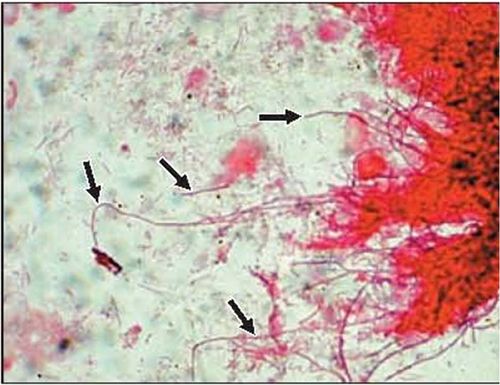Difference between revisions of "Cytology Q&A 02"
Jump to navigation
Jump to search
| Line 1: | Line 1: | ||
| − | {{Template:Manson}} | + | {{Template:Manson |
| + | |book = Cytology Q&A}} | ||
[[Image:11.jpg|centre|500px]] | [[Image:11.jpg|centre|500px]] | ||
Latest revision as of 15:56, 23 September 2011
| This question was provided by Manson Publishing as part of the OVAL Project. See more Cytology Q&A. |
A ten-year-old spayed female barn cat presented with severe dyspnoea and cyanosis. Thoracocentesis yielded a foul-smelling, purulent, grey material. A smear of the material was made (Gram’s, ×100 oil).
| Question | Answer | Article | |
| What are the structures arrowed? | There is a clump of filamentous gram-negative rods. |
Link to Article | |
| What are two organisms that have this kind of morphology? | Actinomyces species and Nocardia species are bacterial genera that have this morphology. Of the two, Actinomyces is most likely in cases of pyothorax in the cat. |
Link to Article | |
| How can you differentiate between the two before culture results can be received? | An acid-fast stain (either Ziehl–Neelsen, or Kinyoun’s Cold Acid-Fast [an easy one to do in-house]) would differentiate the two species; Nocardia species are partially acid-fast, whilst Actinomyces are acid-fast negative. |
Link to Article | |
